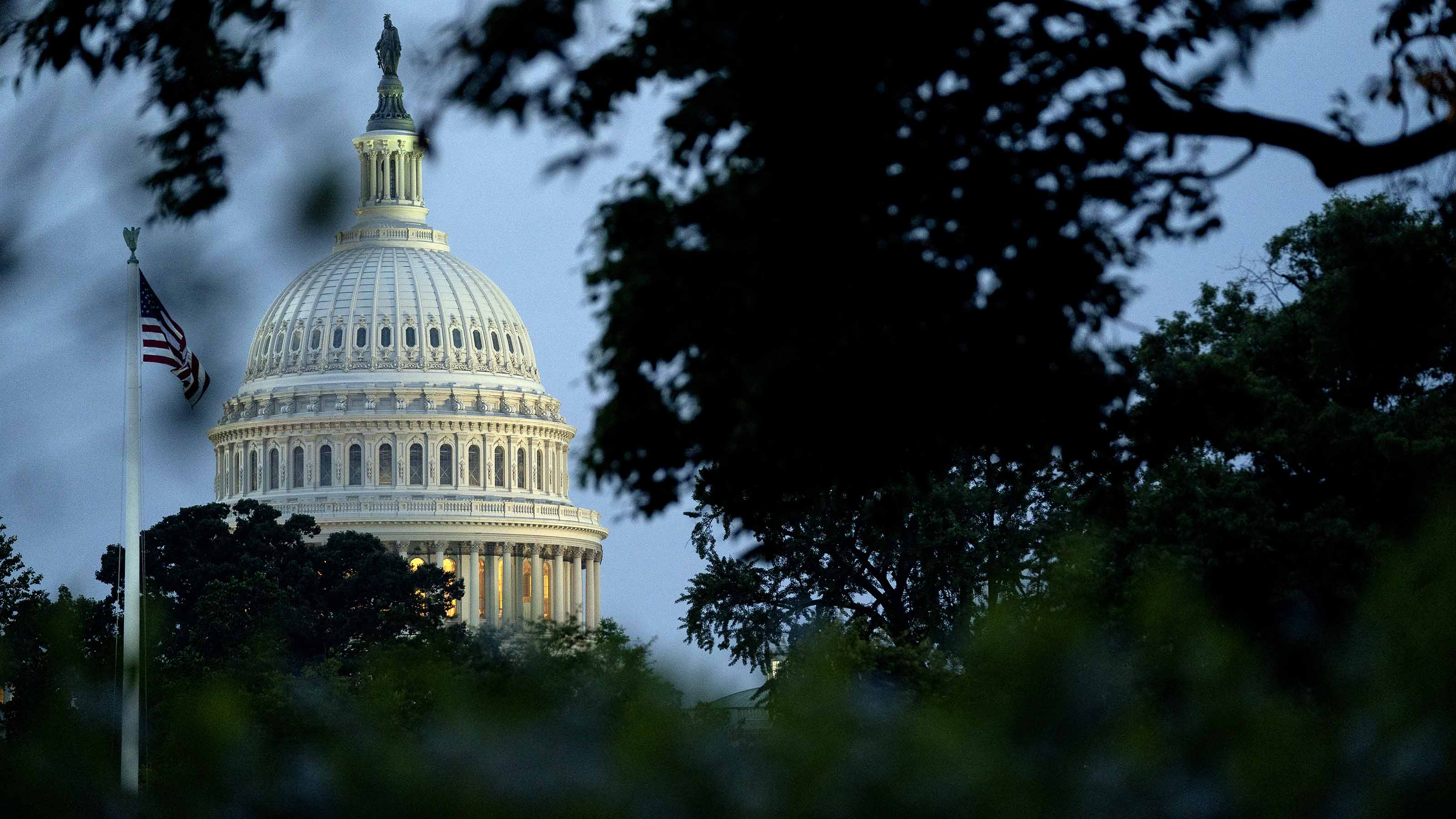Biden Plans Slate of Regulations from Clean Power to Fuel Efficiency: The Kiplinger Letter
The White House is poised to roll out an expansive slate of regulations — getting things shipshape, before the next election.

To help you understand the anticipated updates in the regulatory review process from the White House, and what we expect to happen in the future, our highly experienced Kiplinger Letter team will keep you abreast of the latest developments and forecasts (Get a free issue of The Kiplinger Letter or subscribe). You'll get all the latest news first by subscribing, but we will publish many (but not all) of the forecasts a few days afterward online. Here’s the latest…
Facing a divided and chaotic Congress and uncertain 2024 reelection prospects, President Biden will turn to regulation over the next year or so, getting new rules in place before a new administration possibly takes over. Many of the rules should now be familiar to anyone who has followed Washington and its political jockeying over the last decade.
Biden's Clean Power Plan
Case in point, another Clean Power Plan to regulate greenhouse gas emissions by power plants. Biden’s version of the CPP allows more wiggle room for technology, such as carbon capture, to keep coal and natural gas-fired power plants in compliance with new emissions requirements. But critics say regulators still unfairly penalize fossil fuels, the possible basis for future legal challenges.
CAFE standards
The so-called CAFE standards (corporate average fuel economy), continue to be a perpetual point of contention. The Biden administration wants to boost requirements by 2% annually for cars and 4% per year for trucks, pushing fuel efficiency to a fleetwide average of 58 miles per gallon by 2032, up from 50.5 now.
From just $107.88 $24.99 for Kiplinger Personal Finance
Become a smarter, better informed investor. Subscribe from just $107.88 $24.99, plus get up to 4 Special Issues

Sign up for Kiplinger’s Free Newsletters
Profit and prosper with the best of expert advice on investing, taxes, retirement, personal finance and more - straight to your e-mail.
Profit and prosper with the best of expert advice - straight to your e-mail.
The Department of Energy has also proposed major revisions to how it calculates petroleum-equivalent fuel economy for electric vehicles. Automakers worry this will force a shift to electric cars before the technology and consumers are ready. Regulators are proposing even stricter efficiency gains for heavy-duty vehicles, seeking 10% annual increases in efficiency for model years 2027 through 2032.
Oil and gas leasing on public lands
In the energy and transportation space, a major locus of activity is a hike in the cost of oil and gas leasing on public lands by the Interior Department. This includes increasing the royalty rate from 12.5% to 16.67% and the minimum bid from $2 to $10 per acre. The proposal also strengthens required bonding, the money secured before drilling starts to cover cleanup costs for abandoned wells.
Methane emissions
Officials have also moved to reduce methane emissions from the production of oil and natural gas, as well as leaks from the pipelines used to transport natural gas. They also aim to tighten limits on fine particulate matter, a deadly pollutant that includes soot and is produced by power plants, construction trucks and more.
Other forthcoming regulations of note include a rule redefining “independent contractor” under federal law, which has significant implications for worker pay and benefits, new efficiency standards for appliances, including air conditioners, washing machines, refrigerators and stoves and an overhaul of risk management rules to prevent chemical accidents.
Some of these standards are finalized and have yet to take effect, while others are still in the rulemaking process. Other priorities, like workplace heat regulations, may require a second Biden term.
This forecast first appeared in The Kiplinger Letter, which has been running since 1923 and is a collection of concise weekly forecasts on business and economic trends, as well as what to expect from Washington, to help you understand what’s coming up to make the most of your investments and your money. Subscribe to The Kiplinger Letter.
Related Content
- Biden Administration Considering Raft of Changes to Labor Rules: Kiplinger Economic Forecasts
- Federal Workplace Temperature Rules Heat Up: The Kiplinger Letter
- New Regs Crackdown on Incandescent Bulbs and CTC Exposure: Kiplinger Forecasts
- The Biden Tax Plan: How the Build Back Better Act Could Affect Your Tax Bill
Profit and prosper with the best of Kiplinger's advice on investing, taxes, retirement, personal finance and much more. Delivered daily. Enter your email in the box and click Sign Me Up.

-
 Forget FIRE: Why ‘FILE’ Is the Smarter Move for Child-Free DINKs
Forget FIRE: Why ‘FILE’ Is the Smarter Move for Child-Free DINKsHow shifting from "Retiring Early" to "Living Early" allows child-free adults to enjoy their wealth while they’re still young enough to use it.
-
 7 Tax Blunders to Avoid in Your First Year of Retirement
7 Tax Blunders to Avoid in Your First Year of RetirementA business-as-usual approach to taxes in the first year of retirement can lead to silly trip-ups that erode your nest egg. Here are seven common goofs to avoid.
-
 How to Plan for Social Security in 2026's Changing Landscape
How to Plan for Social Security in 2026's Changing LandscapeNot understanding how the upcoming changes in 2026 might affect you could put your financial security in retirement at risk. This is what you need to know.
-
 Special Report: The Future of American Politics
Special Report: The Future of American PoliticsThe Kiplinger Letter The Political Trends and Challenges that Will Define the Next Decade
-
 What Services Are Open During the Government Shutdown?
What Services Are Open During the Government Shutdown?The Kiplinger Letter As the shutdown drags on, many basic federal services will increasingly be affected.
-
 Banks Are Sounding the Alarm About Stablecoins
Banks Are Sounding the Alarm About StablecoinsThe Kiplinger Letter The banking industry says stablecoins could have a negative impact on lending.
-
 Trump's Economic Intervention
Trump's Economic InterventionThe Kiplinger Letter What to Make of Washington's Increasingly Hands-On Approach to Big Business
-
 What is AI Worth to the Economy?
What is AI Worth to the Economy?The Letter Spending on AI is already boosting GDP, but will the massive outlays being poured into the technology deliver faster economic growth in the long run?
-
 More Shutdown Struggles Ahead for Divided Congress
More Shutdown Struggles Ahead for Divided CongressThe Kiplinger Letter Failure to pass a government funding bill by September 30 would trigger a shutdown of many federal services.
-
 Trump-Era Regulations Will Broaden Access to Crypto
Trump-Era Regulations Will Broaden Access to CryptoThe Kiplinger Letter The president wants to make the U.S. the leader in digital assets.
-
 Big Changes Are Ahead for Higher Ed
Big Changes Are Ahead for Higher EdThe Kiplinger Letter A major reform of higher ed is underway. Colleges are bracing for abrupt change, financial headwinds and uncertainty.